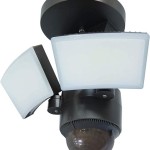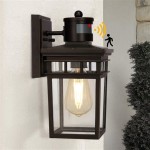How To Seal Outdoor Teak Furniture
Teak furniture is prized for its durability and natural resistance to the elements. However, regular sealing helps maintain its golden-brown hue and protects it from weathering, UV damage, and moisture. Sealing also makes the furniture easier to clean and prevents the growth of mildew and algae.
Preparing the Teak Furniture
Proper preparation is essential for effective sealing. This process involves cleaning the teak to remove dirt, grime, and any existing sealant. Different cleaning methods cater to various levels of weathering.
For lightly weathered teak, a mild soap solution and a soft-bristled brush can suffice. Thoroughly scrub the furniture, paying attention to crevices and joints. Rinse with clean water and allow the furniture to dry completely, preferably for 24-48 hours.
Moderately weathered teak might require a specialized teak cleaner. These cleaners are formulated to remove more stubborn dirt and mildew. Follow the manufacturer’s instructions carefully, ensuring proper ventilation and safety precautions. Rinse thoroughly and allow the wood to dry.
Heavily weathered teak, often exhibiting a silver-gray patina, may necessitate sanding. Start with a coarser grit sandpaper (e.g., 80-grit) and gradually progress to a finer grit (e.g., 220-grit) to smooth the surface. This removes the gray layer and reveals the fresh teak wood beneath. After sanding, clean the furniture with a teak cleaner and allow it to dry completely.
Choosing the Right Sealant
Selecting the appropriate sealant is crucial for achieving the desired results. Different sealants offer varying levels of protection and affect the teak's appearance.
Oil-based sealants enhance the teak's natural golden-brown color and provide good water resistance. They penetrate the wood, nourishing it from within. However, they require more frequent reapplication compared to other sealants.
Water-based sealants are environmentally friendly and offer good UV protection. They typically dry faster than oil-based sealants but might not enrich the color as much. They also offer good protection against mildew.
Synthetic sealants provide excellent durability and protection against weathering, UV rays, and moisture. They form a protective film on the wood's surface, offering long-lasting results. Some synthetic sealants may alter the teak's natural color, so it's important to check the product description.
Applying the Sealant
Proper application techniques are essential for ensuring uniform coverage and achieving optimal protection. Follow the manufacturer's instructions carefully for the specific sealant being used.
Using a clean brush, applicator pad, or sprayer, apply the sealant in thin, even coats. Avoid applying too much sealant at once, as this can lead to drips and uneven drying. Work in the direction of the wood grain for a smoother finish. Allow the first coat to dry completely before applying subsequent coats, typically following the manufacturer's recommended drying times.
For larger pieces of furniture, it can be helpful to work in sections to ensure even coverage. Pay close attention to joints, crevices, and end grains, as these areas are more susceptible to moisture absorption.
Maintaining Sealed Teak Furniture
Regular maintenance helps prolong the life of the sealant and keeps the teak furniture looking its best. Cleaning and periodic reapplication of the sealant are crucial steps in this process.
Regularly clean the furniture with a mild soap solution and a soft-bristled brush. Avoid using harsh chemicals or abrasive cleaners, which can damage the sealant. Rinse the furniture thoroughly with clean water after cleaning.
Reapplying the Sealant
The frequency of reapplication depends on the type of sealant used and the environmental conditions. Oil-based sealants generally require reapplication every 6-12 months, while water-based and synthetic sealants can last longer, often 1-3 years.
Before reapplying the sealant, clean the furniture thoroughly and allow it to dry completely. Lightly sand the surface with fine-grit sandpaper to remove any weathered or flaking sealant and create a smooth surface for the new application. Apply the new sealant following the same techniques used for the initial application.
Protecting Teak Furniture During the Off-Season
If the furniture is exposed to harsh winters or prolonged periods of inclement weather, consider covering it or storing it indoors. This helps protect the sealant and prevents excessive weathering. Using furniture covers specifically designed for outdoor use ensures breathability and prevents moisture buildup.

Cleaning Sealing Outdoor Teak Furniture Shine Your Light

Cleaning Sealing Outdoor Teak Furniture Shine Your Light

Cleaning Sealing Outdoor Teak Furniture Shine Your Light

Caring For Teak Blue Sky Outdoor

How To Care And Clean Teak Furniture Essential Guide 2024 Posteak

Caring For Teak Blue Sky Outdoor

3 Steps To Refinishing Teak Outdoor Furniture H2obungalow

Re Outdoor Teak Furniture Tutorial H2obungalow

Cleaning Sealing Outdoor Teak Furniture Shine Your Light
How To Protect Teak Outdoor Furniture
Related Posts







